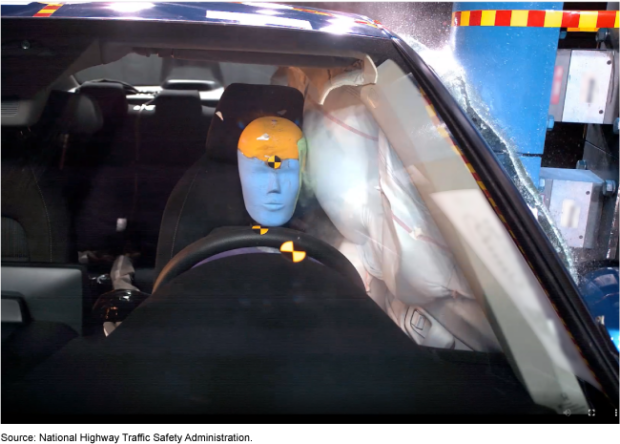A recent report from the Government Accountability Office recommended the National Highway Traffic Safety Administration rethink crash test dummies to collect better data on more types of people.
The investigative arm of Congress that examines the use of public funds said the consequences of vehicle crashes on women, the elderly, heavier people and children are not represented by current crash test dummies used in front- and side-impact crash tests, which “may limit the extent to which the information the dummies provide helps mitigate greater risks faced by certain demographic groups.”
For instance, crash test dummies used now do not have sensors on the lower legs – a portion of the body typically injured in women involved in a car accident. Data-collection sensors are usually on the head, neck, and chest.
GAO’s report said the NHTSA, part of the Department of Transportation, decades ago identified the greater risk to women and older individuals involved in accidents but “does not have a comprehensive plan to address existing risks and limitations in the information dummies provide.” In 2013, the NHTSA study analyzed crash data from 1975 to 2010 and found that female front row occupants faced a 17 percent greater risk of death than male front row occupants in vehicle crashes with similar conditions. The gap has narrowed with newer vehicles and safety features, but it still exists. According to the NHTSA, about 43,000 people died in vehicle crashes in 2021.
“NHTSA recognizes this issue but doesn’t have a comprehensive plan for improving how the data that dummies provide in crash tests can improve safety for all people. We recommended it create one,” GAO said.
As of now, four adult dummies to simulate midsize males and small females are used in the crash tests, as well as a child dummy used to test restraint systems. These dummies provide data to understand the impact of a crash and the safety of airbags for these individuals, but less is known about the impact to heavier or older people – two groups known to have a higher chance of injury severity in a crash. Additionally, researchers said it is difficult to ascertain the safety provided by a restraint like a car seat compared with the automobile.
The 50th-percentile male dummy and 5th-percentile female dummy are used to represent average-sized adults and smaller occupants, the NHTSA has said, but the average male is no longer represented by the dummy used and the average female today may be represented more by the 50th-percentile male dummy, GAO said.
Photo: NHTSA





















 InsurTech Profile: Optimalex’s AI Tools ‘Co-Pilot’ Alongside Human Expertise
InsurTech Profile: Optimalex’s AI Tools ‘Co-Pilot’ Alongside Human Expertise  Progressive Gains as Drivers Shop Around for Auto Insurance—Again
Progressive Gains as Drivers Shop Around for Auto Insurance—Again  E&S Property In Focus: Competition Up, Price Momentum Waning
E&S Property In Focus: Competition Up, Price Momentum Waning  Lockton Re: Hypothetical Cyber Event Offers Carriers an Opportunity to Review Risks
Lockton Re: Hypothetical Cyber Event Offers Carriers an Opportunity to Review Risks 